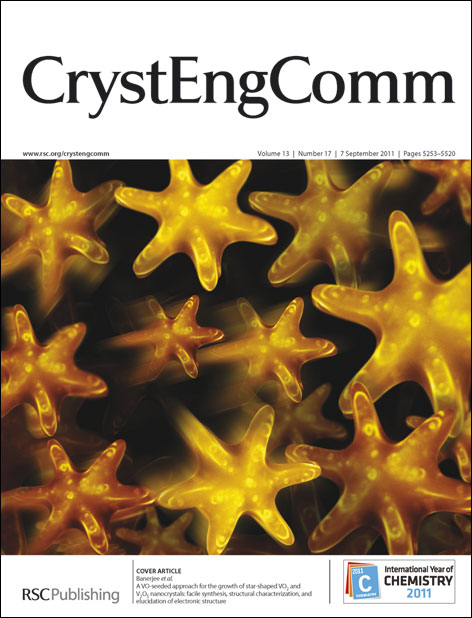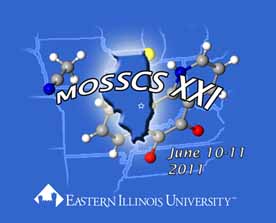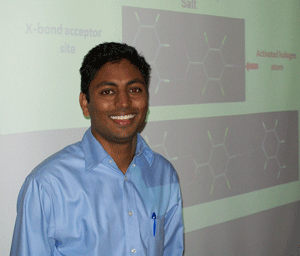This month sees the following articles in CrystEngComm that are in the top ten most accessed:-
An Fe-based MOF constructed from paddle-wheel and rod-shaped SBUs involved in situ generated acetate
Yun-Wu Li, Jiong-Peng Zhao, Li-Fu Wang and Xian-He Bu
CrystEngComm, 2011, Advance Article DOI: 10.1039/C1CE05470H
Structural analyses and luminescent properties of a series of lead(ii) metal–organic frameworks based on 2-sulfoterephthalate
Yi-Xia Ren, Xiang-Jun Zheng and Lin-Pei Jin
CrystEngComm, 2011, 13, 5915-5923 DOI: 10.1039/C1CE05303E
Coordination polymers based on a flexible bis(triazole) ligand and aromatic polycarboxylate anions: syntheses, topological structures and photoluminescent properties
Yajuan Mu, Gang Han, Shuying Ji, Hongwei Hou and Yaoting Fan
CrystEngComm, 2011, 13, 5943-5950 DOI: 10.1039/C1CE05129F
Synthesis, X-ray crystal structures and inclusion properties of a hydrogen-bonded coordination polymer [Ni(SCN)2(pppeH)2]·(guest) x
Ryo Sekiya and Shin-ichi Nishikiori
CrystEngComm, 2011, Advance Article DOI: 10.1039/C1CE05566F
Three three-dimensional anionic metal–organic frameworks with (4,8)-connected alb topology constructed from a semi-rigid ligand and polynuclear metal clusters
Shengqun Su, Chao Qin, Shuyan Song, Zhiyong Guo, Ruiping Deng, Wan Chen, Xuezhi Song, Song Wang, Guanghua Li and Hongjie Zhang
CrystEngComm, 2011, Advance Article DOI: 10.1039/C1CE05149K
Oligomeric and polymeric organizations of potassium salts with compartmental Schiff-base complexes as ligands
Maliheh Mousavi, Virginie Béreau, Jean-Pierre Costes, Carine Duhayon and Jean-Pascal Sutter
CrystEngComm, 2011, 13, 5908-5914 DOI: 10.1039/C1CE05127J
Structural phase transition due to the flexible supramolecule of (4-cyanomethylanilinium)([18]crown-6) in [Ni(dmit)2]- crystal
Qiong Ye, Tomoyuki Akutagawa, Heng-Yun Ye, Tian Hang, Jia-Zhen Ge, Ren-Gen Xiong, Shin-ichiro Noro and Takayoshi Nakamura
CrystEngComm, 2011, Advance Article DOI: 10.1039/C1CE05581J
Facile synthesis of zinc(ii)-carboxylate coordination polymer particles and their luminescent, biocompatible and antibacterial properties
Kuaibing Wang, Yuxin Yin, Chengying Li, Zhirong Geng and Zhilin Wang
CrystEngComm, 2011, Advance Article DOI: 10.1039/C1CE05705G
Selective CO2 capture by a 3d–4d coordination polymer material with 1D channel
Sheng-Li Huang and Guo-Xin Jin
CrystEngComm, 2011, Advance Article DOI: 10.1039/C1CE05474K
Polyhedron-aggregated multi-facet Cu2O homogeneous structures
Shaodong Sun, Heng Zhang, Xiaoping Song, Shuhua Liang, Chuncai Kong and Zhimao Yang
CrystEngComm, 2011, Advance Article DOI: 10.1039/C1CE05597F
Why not take a look at the articles today and blog your thoughts and comments below.
Fancy submitting an article to CrystEngComm? Then why not submit to us today or alternatively email us your suggestions.











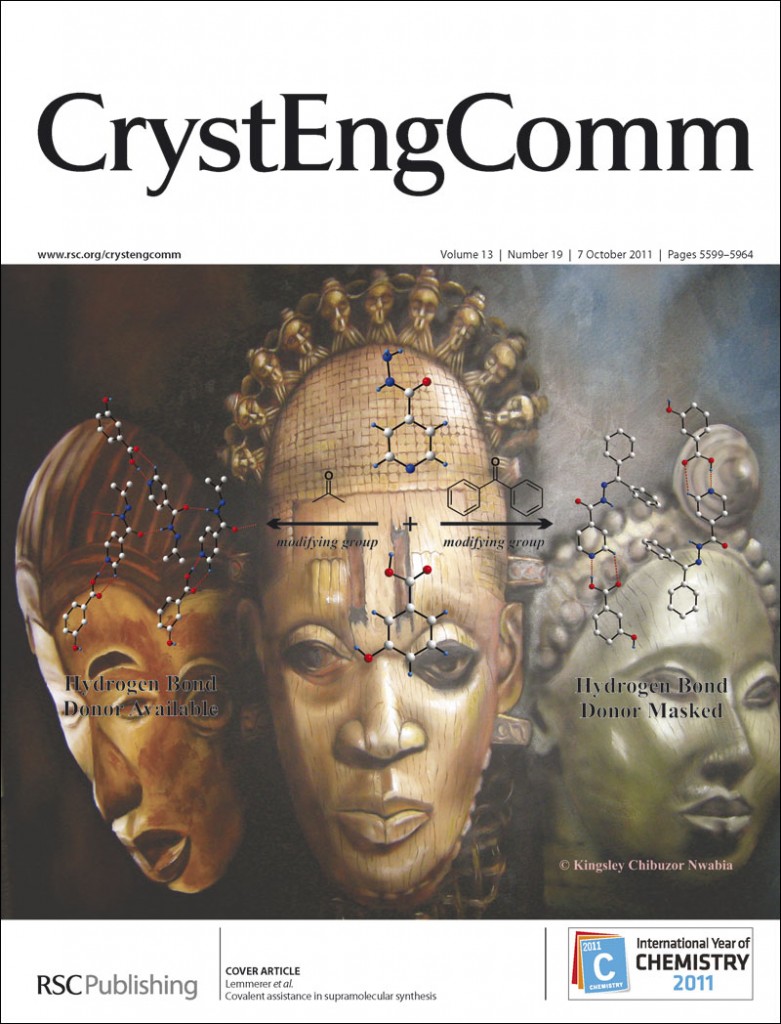
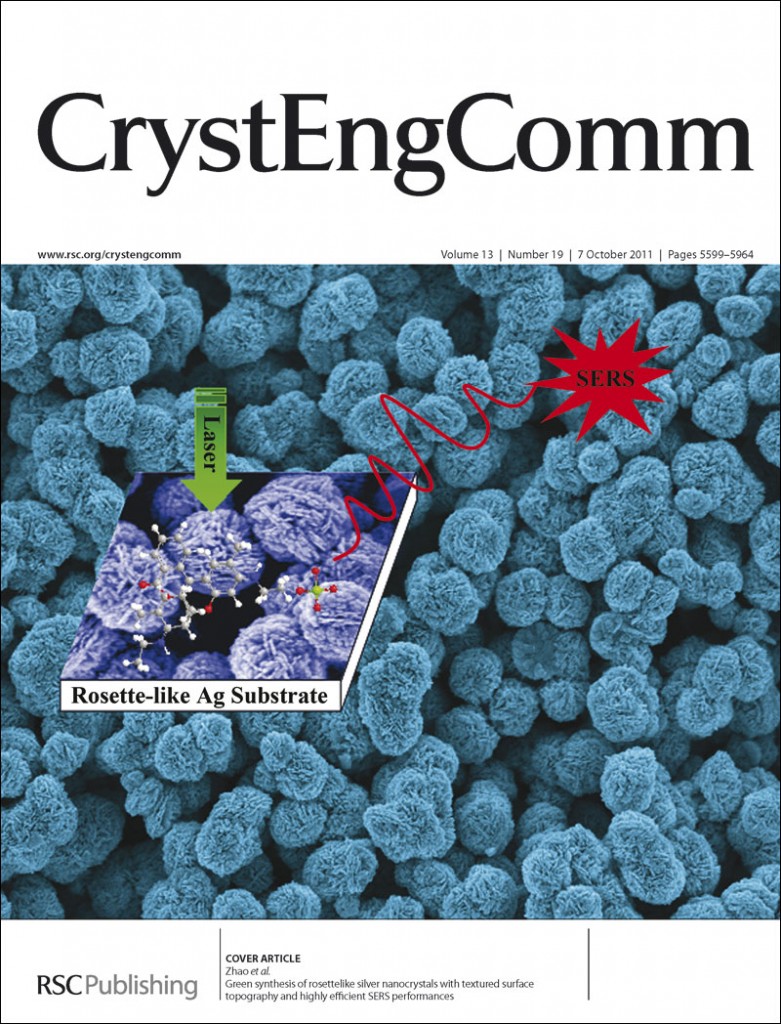
 Water contamination by synthetic organic chemicals is a burgeoning global problem due to the difficult degradation of these materials. Bismuth vanadate (BiVO4) has been identified as promising photocatalyst for environmental applications because of its stability in water without altering the pH value. A very low band gap of 2.4 keV also means there is potential to activate BiVO4 by visible light. The formation of good crystals with few structural defects and preferred facets is essential to the optimisation of these processes.
Water contamination by synthetic organic chemicals is a burgeoning global problem due to the difficult degradation of these materials. Bismuth vanadate (BiVO4) has been identified as promising photocatalyst for environmental applications because of its stability in water without altering the pH value. A very low band gap of 2.4 keV also means there is potential to activate BiVO4 by visible light. The formation of good crystals with few structural defects and preferred facets is essential to the optimisation of these processes.
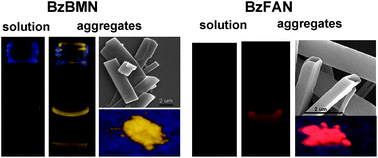 A CrystEngComm article by Ben Zhong Tang and colleagues has been highlighted in the weekly ACS Noteworthy Chemistry section:
A CrystEngComm article by Ben Zhong Tang and colleagues has been highlighted in the weekly ACS Noteworthy Chemistry section:
